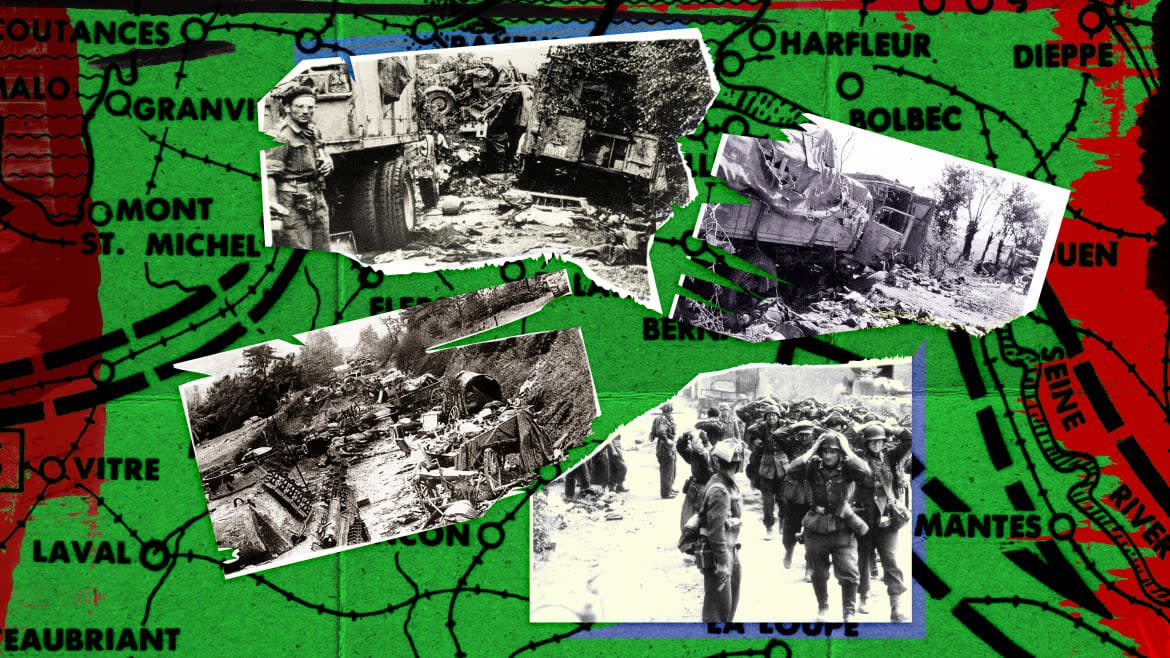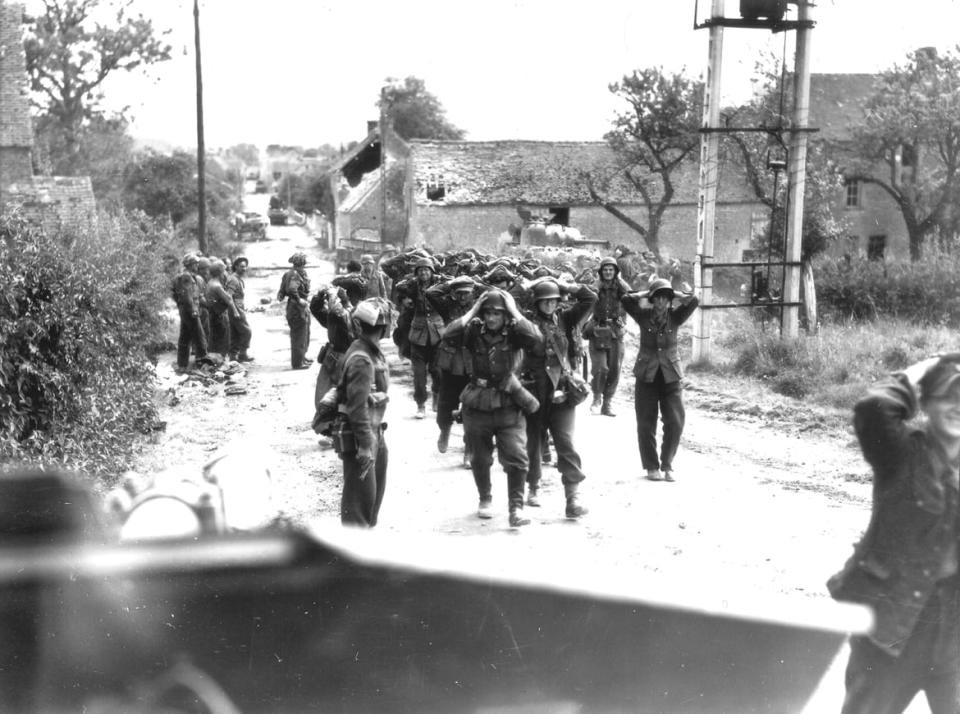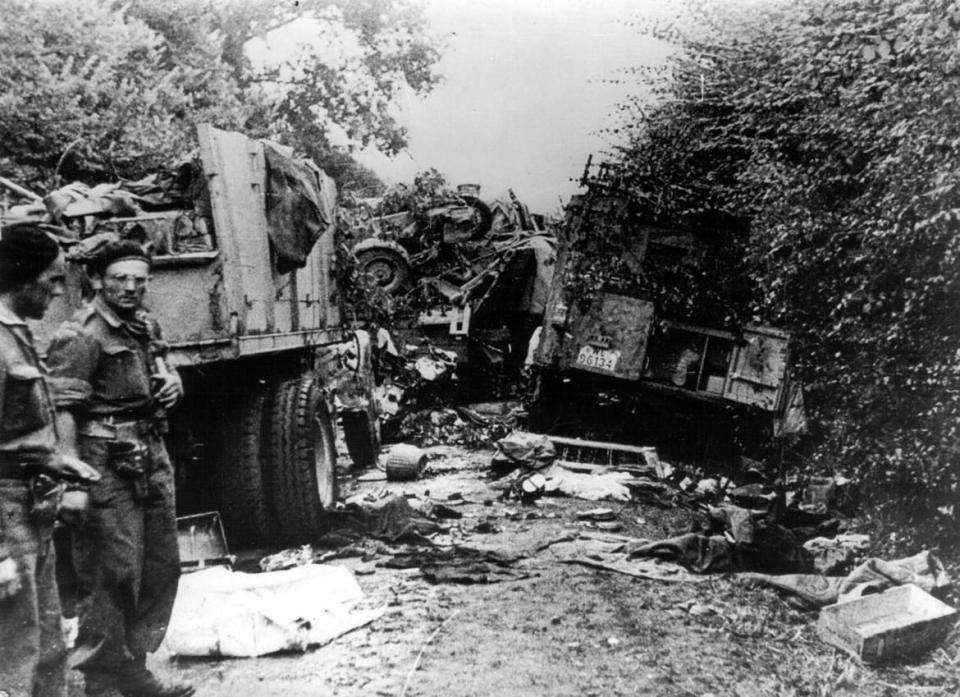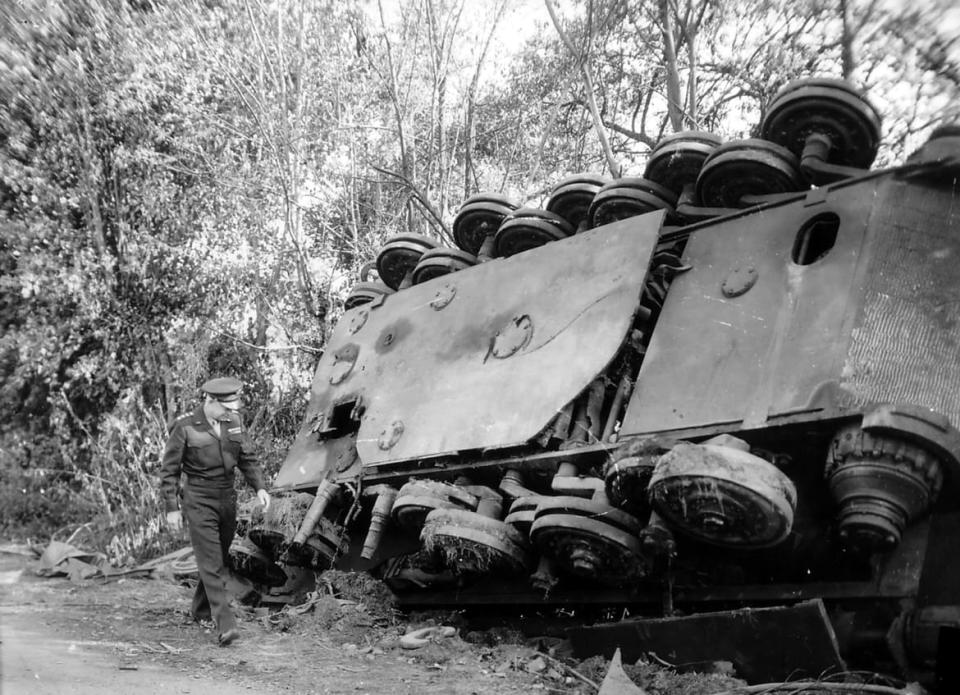How the ‘Corridor of Death’ Saved the D-Day Invasion

Moissy is no more than a hamlet on a road to nowhere in Normandy. At a barely visible turn-off, easily overlooked, there’s a small hand-painted sign, dark blue lettering on the ground the color of dried blood, that reads: Août 1944, Couloir de la Mort.
Corridor of Death?
It’s only natural that this week, on the eightieth anniversary of D-Day, the vast operation that led to the liberation of Western Europe in 1944, attention is focused on the ceremonies, as it usually is, on the first precarious days of the landings on the beaches of Normandy.
Meanwhile, the ending of the battle in Normandy, more than two savagely fought months later, remains little known. Yet it marked a decisive turning point in the European war, when some of Hitler’s finest forces were eviscerated—in the Corridor of Death at Moissy.
Today, so long after that event, the rich, rolling landscapes of Normandy have healed from the scars of war as completely as, say, the killing fields of the American Civil War, places like Antietam Creek, or the slopes and meadows of Gettysburg. (D-Day and the Civil War were just 80 years apart).
Moissy itself lies in a shallow valley, rich with three of the region’s crops: wheat, sunflowers, and grazing grass. Everything speaks of abundant life. Vegetable patches are knee-deep in courgettes and tomatoes are set out on the sills of cottage windows to ripen.

German prisoners of war on August 19, 1944, surrendered to the battle group of the 4th Canadian Armored Division.
Charolais cows, with creamy café au lait coats, get fat on the saturated pastures. Daily, their milk leaves a farm in a dairy tanker that turns first into a lane too narrow for two-way traffic.
It was this lane, fringed by shade trees and the deep-rooted tangle of hedgerows known as bocage—an ancient Normandy feature that had, since the landings on June 6, 1944, entangled both invaders and defenders—that formed a fatal bottleneck for the Germans attempting to retreat east toward Paris.
The design of the culminating battle was becoming starkly clear from the crest of a hill occupied by 80 tanks and 1,500 infantry of the Polish II Corps. The Poles were avengers. They fought the Germans with the specific fury of men whose nation was the first to be blitzkrieged into submission in 1939. The Poles could see the Germans caught in the narrowing route below.
But their sense of security was misplaced: a Panzer brigade, seeking to keep the escape route open, stormed the hill from behind with suicidal ferocity until it was rimmed with a bulwark of bodies. On the afternoon of Aug. 21, the Poles were finally relieved, after 24 hours, by a column of tanks from the Canadian Grenadier Guards. The Poles had lost 20 percent of their combat strength: 325 dead, more than a thousand wounded and 114 missing.
(Today that hill is a memorial, known as Hill 262, where the flags of four nations fly, France, the United States, Canada, and Poland).

German column destroyed by 1st Polish Armored Division in Normandy 1944.
On Aug. 20 bad weather had given the remnants of a German army that had once been half a million strong some cover from waves of attacks by Allied air forces. The traffic was directed from the belfry of a church by General von Luttwitz, commanding the second Panzer division, and General Straube, commanding the 47th Armored Corps.
They oversaw a hellish scene. The roads were choked with wrecked vehicles and corpses. It was a chaotic mix of tanks, half-tracks, trucks, horse-drawn wagons, motor-cycles and exhausted foot soldiers. A charnel stench overlay everything. Those who made it into the last still mobile column decided, when they reached Moissy, to attempt to make a break-out across country by wheeling north-east into the narrow lane. But then the weather lifted.
Rocket-firing aircraft knocked out the leading vehicles, jamming the rest into the bottleneck of the bocage, who were then strafed by machine gun fire. Men who broke into the surrounding fields came under the fire of a pursuing unit of the Canadian army.
One of the gunners recalled: “We would see a group trying to run across a field from one wood to another, and watch some fall, some run on, some lie moaning in front of us. It was more an execution than a battle.”
The Third Reich met its nemesis here as much as it had—albeit in far greater numbers—in Russia at Stalingrad. In four days, 10,000 Germans were put out of action and 40,000 captured—a whole elite Panzer division ceased to exist.
On Aug. 23, General Dwight D. Eisenhower, commander of the liberating armies, arrived at the killing fields around Moissy. He said it was a scene that only Dante could have described.
A French historian did his best: “For hundreds of metres one could walk only on decaying human remains, in ominous silence, in luxurious countryside which life had suddenly deserted… the trees had lost their leaves and branches and no bird sang.” (German corpses were still being found in the fields 15 years later.)
The liberation of Paris followed two days after Eisenhower’s visit.
The carnage at Moissy effectively ended the Battle of Normandy, which began on D-Day, on the beaches named Utah, Omaha, Gold, Juno, and Sword.
Ultimately, two million Allied soldiers poured into Normandy from those beaches and nearby ports, well over half of them American. Together, the Allies lost 206,703 men. But by the end of the battle one vision of Europe had begun its purge of another.
Eighty years ago, America’s commitment to the salvation of Western civilization was absolute. There was a messianic drive behind the invasion (Eisenhower’s memoir was titled Crusade in Europe). But then, as now, the nagging question was: Are the Europeans themselves worthy of the sacrifice made for them in 1944?
The first country to face that question was France.

Gen. Dwight D. Eisenhower, supreme commander of the Allied expeditionary forces, inspects an overturned German tank by a roadside in Chambois, France.
In the Normandy city of Caen a museum of the war years is brutally specific about the collapse and capitulation of the French armies in 1940, and records with unforgiving detail “The Black Years” that followed as the craven Vichy regime, under the 84-year-old Marshal Petain, acted as Hitler’s surrogate in France. The museum frames this disaster as being “within six weeks the unprecedented collapse of a great power.”
But, of course, no truly great power collapses like that. To this day the French still debate how that happened. And, for sure, the invasion of Ukraine by Vladimir Putin has given this kind of soul-searching new force and meaning. Ironically, the roles of the European powers are reversed now: France has the best-equipped military in the European Union and Germany one of the least well-funded and prepared.
Beyond the cliff tops of Normandy, where row upon row of crosses mark the graves of those who fell fighting their way from the beaches, there are thousands of other far smaller burial grounds the region where the men were buried where they died, in clusters—men of every Allied nationality. The graves are well cared for, the flowers always fresh.
The meaning of all of this should be observed now, as it is honored in French: N’oubliez pas.
Do not forget.
Get the Daily Beast's biggest scoops and scandals delivered right to your inbox. Sign up now.
Stay informed and gain unlimited access to the Daily Beast's unmatched reporting. Subscribe now.

 Yahoo News
Yahoo News 
